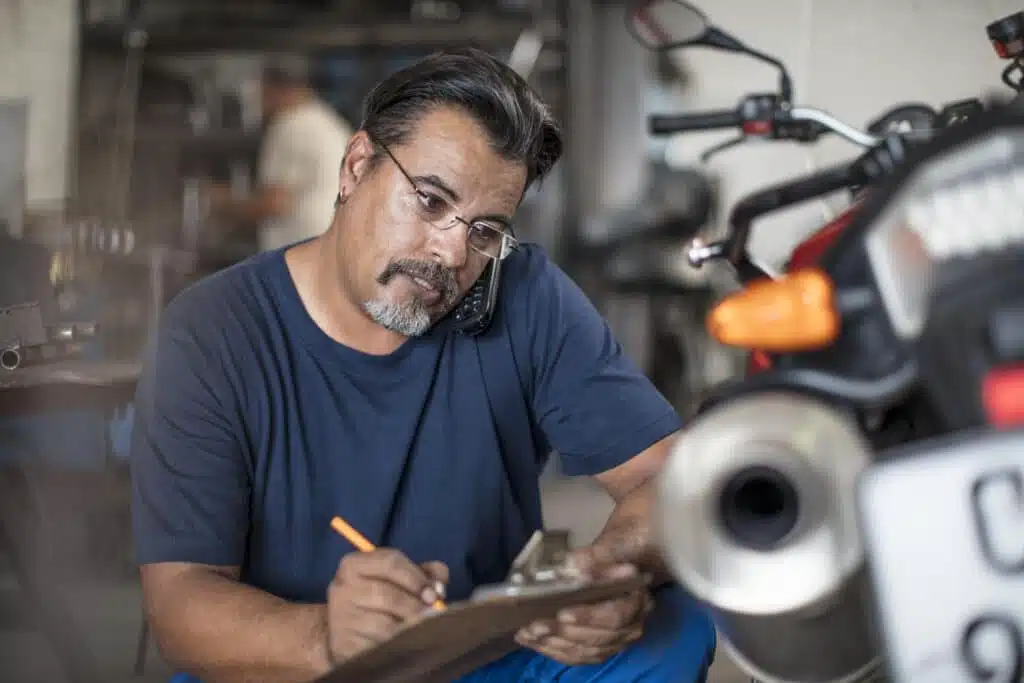Inspections of motorcycles: motorcyclists in total resistance mode

Since April 15th, technical control for motorcycles, known as CT2RM, arrived in France, and believe me, not everyone is happy about this news. If you are a motorcyclist, you probably already heard: from now on, all motorcycles must pass a technical control to be able to circulate. As expected in our community, this regulation has not been well received, which has triggered a massive boycott. According to the FFMC (French Federation of Angry Motorcyclists), more than 80% of motorcyclists decided to skip this control. And believe me, it has generated a lot of noise. So, how is this situation? Let’s take a recap.
CT Moto: A Rule that Makes One Grit Their Teeth
You probably know about the technical control for cars. In a nutshell, it’s like a medical check-up to verify that your vehicle meets safety and environmental standards. So far, so good. But starting in April 2024, the same control will apply to motorcycles and scooters. In theory, it seems like a good idea: to ensure that our motorcycles are safe and do not pollute too much. However, among motorcyclists, this has not been well received. Between the cost, the paperwork, and the feeling that they are restricting our freedom, it is hard to accept this regulation.
The Response of the Motorcyclists
This is where the FFMC comes in. They are not willing to sit idly by. They have launched a call for a total boycott of this control, and apparently, it has had an impact. According to their figures, almost 80% of motorcyclists have ignored the regulation. This is surprising, especially when considering that there are approximately 2.3 million motorcycles on the road in France. To put it into perspective, fewer than 500,000 motorcycles have shown up for the control in almost 7 months. In other words, a large part of the motorcycle community has decided not to submit to this test. And the FFMC makes it clear: this resistance goes beyond their own members. It is a resounding rejection.
Why Does This Boycott Make So Much Sense?
Why such a massive boycott? The FFMC and motorcyclists believe that this control is unnecessary, expensive, and, above all, restrictive. On one hand, they believe that the safety of motorcycles is not really ensured by this control. On the other, it becomes a real administrative and financial headache. Going through a technical control center costs an arm and a leg, and often one has to carry out repairs to meet the regulations. Therefore, the FFMC is pushing for a radical reform. The goal of the boycott is to put pressure on technical control centers. They have invested in equipment and trained their staff, but if motorcycles do not show up, the situation will become complicated for them.
A Resistance for Fairer Control
The goal of the boycott is to force the authorities to reconsider their stance. According to the FFMC, motorcyclists want a regulation that is fairer, less restrictive, and takes into account the realities on the ground. For some, the dream would even be the total elimination of this CT2RM. But the FFMC goes further: their message is clear, the more it is boycotted, the more problems technical control centers will face. And that is a powerful message.
In summary, this boycott highlights a huge gap between motorcyclists and the authorities. Those in charge of deciding seem to be completely disconnected from the reality of our roads and the needs of motorcyclists. The longer the boycott lasts, the deeper this division will grow. If the authorities do not react, we could be witnessing a citizen resistance against a law deemed disproportionate.
What Future Awaits Technical Control for Motorcycles?
For now, everything is uncertain. If the resistance continues to grow, it is likely that the authorities will have to rethink their position. It wouldn’t be the first time that a massive movement achieves significant changes. The big question is whether this boycott will lead to a complete review of the law or even to its total cancellation. In any case, the story of the CT2RM is just beginning.





